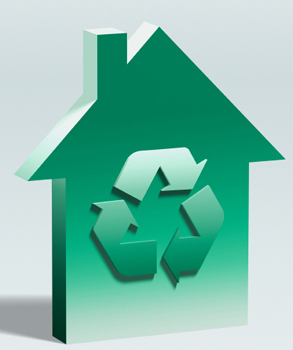April 7, 2008
Be Green When You Clean

By Michael D. Shaw
The notion of Green buildings dates back to the 1970s, primarily as a reaction to the energy crisis of 1973, although some few architects—notably Victor and Aladar Olgyay—were ahead of the curve by at least 20 years. Sadly, much of what was touted as energy conservation amounted to little more than sealing up structures, and this created massive problems with indoor air quality.
These days, of course, being Green is chic: Leonardo DiCaprio recently purchased a Hudson River facing unit at Riverhouse, a super eco-friendly development in Manhattan’s Battery Park City. Riverhouse is LEED-certified gold—the second highest rating—from The Leadership in Energy and Environmental Design Green Building Rating System, developed by the U.S. Green Building Council.
DiCaprio noted that, “Riverhouse is a prime example of how green technology is both accessible and achievable for new residential developments—it is a groundbreaking building.”
Amenities at Riverhouse include:
- Twice-filtered air and seasonally-adjusted humidity
- On-site water filtration system
- Extensive use of locally-acquired renewable materials
- Use of low or non-polluting paints, adhesives, and sealants
- Significant use of solar energy
- 75% of all open roof areas planted with fresh greenery
- Triple-Layered Windows
- Energy Star Compliant Appliances
This looks great, of course, but perhaps the developers are begging the question of just how the facility will STAY Green. After all, the oft-cited Executive Order 13101 (dated September 14, 1998) entitled Greening The Government Through Waste Prevention, Recycling, And Federal Acquisition defines “environmentally preferable” as:
[P]roducts or services that have a lesser or reduced effect on human health and the environment when compared with competing products or services that serve the same purpose. This comparison may consider raw materials acquisition, production, manufacturing, packaging, distribution, reuse, operation, maintenance, or disposal of the product or service.
I suggest we focus on the maintenance angle for a moment…
While it is no secret that many cleaning products, especially in the commercial realm, are not exactly environmentally-friendly, it is less well known that most major cleaning product manufacturers offer at least a basic line of green cleaning products. Fortunately, some people are trying to get the word out. In the forefront of the Green cleaning revolution is Daniel Josephs of Spruce Industries—a New Jersey-based producer and distributor of sanitary cleaners, chemicals and equipment.
Here are a few samples of what you’ll find on Daniel’s blog:
- He touches on a subject covered frequently in this column—infection control. Josephs references a study which found that 25% of refillable bulk soap dispensers contain unsafe levels of bacterial contamination. Coliforms were found in 16% of the samples. Given the fact that sanitary sealed systems or cartridge soaps are so readily available, he asks, why take the chance and continue to use bulk soap?
- A post entitled It’s Not All About Dodgeball describes a custodian burnishing a school gym floor with an apparently dangerous compound, in advance of a dodgeball game. Daniel reflects on how healthy it is to play on a floor that needs a face mask to clean it, especially since there are effective Green alternative products.
- In Beer Bottles Can Clean Your Floor, Josephs describes an eco-friendly and functionally superior line of mops.
- Two posts show how to save money by being more Green, describing dilution-control dispensers and microfiber materials.
- In Can You Be Too Green?, he notes that no true Green disinfectant actually exists, and recommends certain products that are still bio-degradable and relatively safe to use.
The notion of “sustainability” derived from the so-called Brundtland Report of 1987 that defined “sustainable development” as development that meets the needs of the present without compromising the ability of future generations to meet their own needs.
EPA notes that…
This concept of sustainability encompasses ideas, aspirations and values that continue to inspire public and private organizations to become better stewards of the environment and that promote positive economic growth and social objectives. The principles of sustainability can stimulate technological innovation, advance competitiveness, and improve our quality of life.
If sustainability means anything at all, much more emphasis should be given to keeping Green buildings Green, and maintaining less-than-Green structures with the most responsible methods possible.

